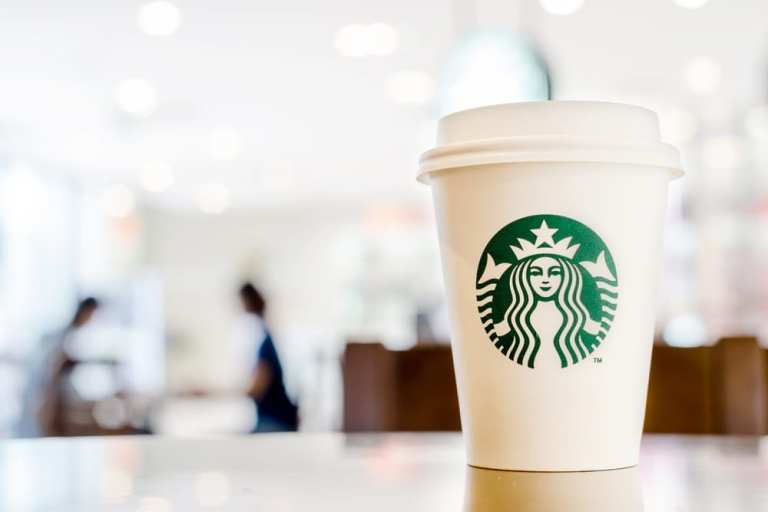Starbucks Hits 16.3M Mobile Users, Eyes Expanded Delivery

After a disappointing holiday quarter in 2017, the pressure was on Starbucks, which reported its most recent quarterly earnings yesterday (Jan. 24). Investors were eager to see if the brand’s efforts to streamline its special offerings, and efforts for holiday 2018, had brewed up a merrier picture.
By the numbers, Starbucks delivered. Earnings came in at $.68 per share, topping analysts’ estimates of $.65 per share, and revenue was up 9 percent to $6.63 billion, beating estimates of $6.49 billion for the quarter. Same-store sales were up 4 percent, beating estimates of 3.2 percent from Wall Street’s pre-release. Transaction levels were flat year on year, but average ticket size was up 3 percent.
“We are particularly pleased with the sequential improvement in quarterly comparable store transactions in the U.S., underpinned by our digital initiatives and improved execution of our in-store experience,” Starbucks CEO Kevin Johnson said in a statement.
There were areas of investor concern, though, particularly the slowing growth in the Chinese market. Transactions were down 2 percent, though same-store sales did tick up 1 percent. John Culver, Starbucks president of international channel development and global coffee & tea, noted on the call with investors that, with nearly two decades of successful and growing operations under its belt, Starbucks is confident it can “navigate any fluctuation that may take place” in the Chinese market.
Overall, sales were up 3 percent, and transactions were up 1 percent in the Asia-Pacific region as a whole. Sales in Europe, Africa and the Middle East were all down by 1 percent.
Starbucks touted its increased digital sales, along with healthier menu offerings and cold beverages, as major drivers of growth during the quarter. The company also noted that its loyalty rewards program’s enrollment reached 16.3 million — a year-over-year increase of 14 percent.
“This result was driven by leveraging our increased digital reach, as well as a more seamless customer onboarding experience, greater mobile-order and pay adoption, and enhanced personalization features. Between digitally registered and active [rewards] customers, we are now approaching 30 million digital connections in the U.S,” Johnson said.
He also noted on the call with investors that revisions to the loyalty program are forthcoming, which will make it easier for customers to earn rewards faster and make the rewards points applicable to a wider range of products.
Johnson noted that one of Starbucks’ 2019 goals is to draw more consumers into its loyalty program, and into using the Starbucks app. As of the end of 2018, 12 percent of Starbucks’ total sales came in through its mobile ordering features, according to the latest edition of the PYMNTS Mobile Order-Ahead Tracker.
Furthermore, Johnson believes that penetration will go even deeper, as Starbucks has joined efforts with Uber Eats to bring delivery services to U.S. cities.
“Our partnership with Uber Eats is gaining momentum,” he said during the call.
The two firms piloted the delivery program, starting last fall, in Miami. As of Tuesday (Jan. 22), Starbucks delivery was officially up and running in San Francisco. Over the next several weeks, delivery services via Uber Eats are on deck to roll out in Boston, Chicago, Los Angeles, New York and Washington, D.C. A London pilot is also in the pipeline.
Delivery orders are charged a $2.49 fee, the company said, and deliveries are supposed to arrive warm within the half-hour.
“From a customer perspective, Starbucks [delivery] is being seamlessly integrated into the Uber Eats mobile app — enabling full beverage customization, and fully integrating into our store operations to ensure a premium Starbucks experience,” Johnson noted.
Starbucks is predicting same-store sales of between 3 percent and 4 percent globally in 2019. The brand is also forecasting net income between $2.32 and $2.37 per share for the fiscal year.